WIRED UP SAFELY

Wired Up Safely
Keep a constant check on your electrics. Damaged flexes and incorrectly fused appliances can cause damage.
The first thing to do is to make sure that your wiring is in good order. Unless it's been installed within the last five years, have it checked either by someone from your local Electricity Board or by an approved electrical contractor who is on the Roll of the National Inspection Council for Electrical Installation Contracting (NICEIC). Ask the inspector if the circuit will be able to take the load of any appliance-such as a washing machine, dishwasher or freezer-which hasn't been in the house before.
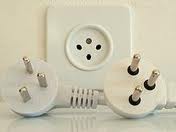
Plugs And Sockets
The most basic parts of your home electrics are the plugs and sockets and you should learn a little about them. Everyone should know how to wire a plug; the information is usually supplied with the instructions accompanying any electrical device you buy.
Britain and many other countries have standard colours for 3-wire flexes on appliances. Brown is for the live wire, usually marked L in the plug; blue is neutral, marked N in the plug; and green and yellow stripes indicate the earth, which is either marked E in the plug or is denoted by a special symbol.
Don't buy cheap plugs from market stalls as these may be imported and have in some instances been found to be lethal. Buy from reputable electrical retailers and check that the plugs conform to BS 1363.
Check all the plugs in the home regularly to ensure that the terminals and cover have not worked loose, that the flex is securely fixed in the flex grip and that there are no bare wires poking through the sides. Replace a plug if it becomes broken or cracked.
For equipment that tends to get rough handling, like vacuum cleaners and electric drills, you can buy smash-proof plugs which are made especially to withstand rough treatment.
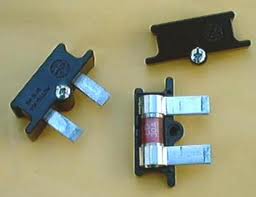
Fuse-Wise
It is essential to fit the correct fuse size for the appliance's wattage rating. One higher than that recommended defeats the whole object of a fuse, which is safety. On the other hand, if you use a fuse that is too low it likely to blow when the appliance is switched on.
In 3-amp and 13-amp plugs, use a cartridge fuse. For appliances rated up to 720 watts you should use a 3-amp fuse and for appliances rated between 720 and 3,000 watts (3kW) use a 13-amp fuse. Keep spare fuses in an accessible place so that you can replace one quickly if it goes.
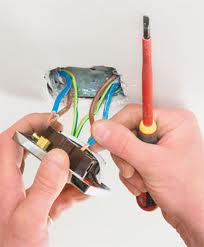
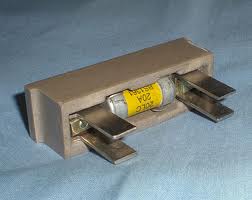
Rewiring A Fuse
Turn off mains switch at consumer unit and inspect each fuse to locate broken wire. Unscrew and remove wire. Insert new wire of correct rating, looping one end round screw and tightening. Run wire across ceramic bridge or through centre insulator and connect to other screw.
Replacing A Cartridge Fuse
A cartridge fuse is wire contained in an insulated tube with metal caps. A plug will take a 3-1mp fuse (up to 720 watts) or 13-amp (up to 3000 watts). Always use a fuse of the appropriate rating. To replace, lever the old fuse out and clip in a new one. Some consumer units are also fitted with cartridge fuses.
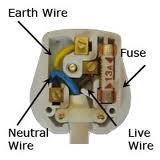
Wiring A 13 Amp Plug
Undo the screw in the centre of the plug to remove the cover. Remove the cartridge fuse and slacken the flex grip. Strip 50mm of sheathing from the flex. Hold in position on the plug to judge required length of core wires and cut them to length. Trim off insulation and fix wires in terminals according to colour code. Live neutral and earth terminals are always in the plug to judge required length of core wires and cut them to length. Trim off insulation and fix wires in terminals according to colour code. Live neutral and earth terminals are always in the same positions. Some flex is only two-core-secure these wires only into live and neutral terminals. Secure the flex with the grips, replace the fuse of correct rating and cover.
Adapt With Care
If you use a lot of multi-adaptors around your home, it indicates that you don't have enough socket outlets; you should consider either turning single sockets into double, adding extra outlets or having the place rewired. Adaptors should not be considered as permanent socket substitutes; they are easy to misuse and can cause problems. If you must use one as a temporary measure, make sure it has its own cartridge fuse and fits firmly into the socket outlet. Don't plug in more than two appliances at one time and always check that their combined ratings don't exceed those of the outlet, which will usually be 13 amp. Check regularly that the adaptor has not worked loose in the socket outlet. If contact points won't meet, that will cause overheating. Too many adaptors in use around a house can mean that the circuit is overloaded-a real fire hazard.
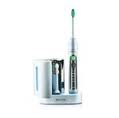
Flex Care
Flexes are used to convey the power from the socket outlet to the appliance or light. Check them regularly-especially on things like irons and kitchen appliances, where they can be damaged easily by touching sources of heat. Replace them yourself when they become worn, or have an expert do it. Don't repair them with adhesive or insulating tape except as a temporary measure and don't extend them unless you use a special flex connector; just twisting the wires together and covering them with tape is dangerous. Avoid trailing flexes, especially in areas where people walk since, apart from being easy to trip over, constant walking over a flex will damage its insulation. This may cause overheating and, eventually, fire. Never lay flexes under floor coverings or anywhere they might become damp or wet.
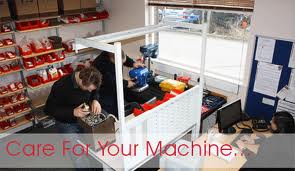
Mind Your Machines
Use electrical appliances according to the manufacturer's instructions and have them serviced regularly rather than waiting for them to break down. Always switch off at the socket and remove the plug before attempting to check or repair any electrical appliance.

Lighting Up
Don't use a lighting circuit for anything over the maximum wattage it is intended to carry and never plug an appliance into a lamp holder. Metal light fittings, whether ceiling-fixed or on table lamps, must have the metal parts earthed and should never be used from a 2-pin plug or an unearthed socket outlet.
Check the flexes on hanging lights from time to time, especially if they carry heavy fittings or shades. Find out the maximum recommended wattage of the light bulb for each table lamp and don't exceed it. If it's not indicated on the label, ask in your Electricity Board shop. Bear in mind that potentially dangerous areas of the home like stairs and bathrooms should be well lit so that people can see where they are going.
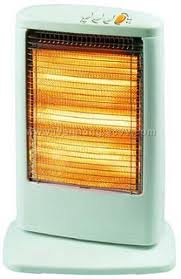
Electric Heaters
Radiant fires must have a permanent safety guard built into them. Don't let them become dusty as this can ignite when they are switched on. Don't use radiant fires or convection heaters within at least a meter (a yard) of furnishings like curtains or loose covers and never hang clothes near them to dry.
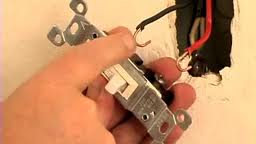
Replacing Light Switches
Turn off electricity at main switch and remove appropriate circuit fuse. Always do this before working on any electrical fittings or wiring. If you are in any doubt, don't take chances. Get an electrician to do the job for you
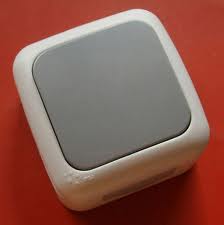
Single Switch
To replace a light switch remove two screws holding the cover. Undo terminal screws and remove. wires, taking note of where they go. Replace earth wire (green/yellow-sleeved wire) to earth terminal. in older wiring the earth wire will be green sleeved.
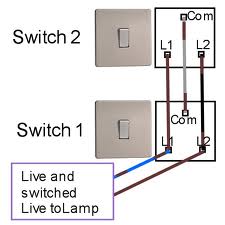
Two Way Switching
This is a bit more complicated than replacing a single switch, but provided you are replacing the switches with same type it isn't that difficult. Make a drawing showing the colour of wires and where they go before removing from old terminals.
Do one switch at a time. Change the wires one by one and fix them into appropriate new terminals. Two-way switches are completely different from the single type, and you can't change an ordinary circuit into two-way just by replacing the switches.



